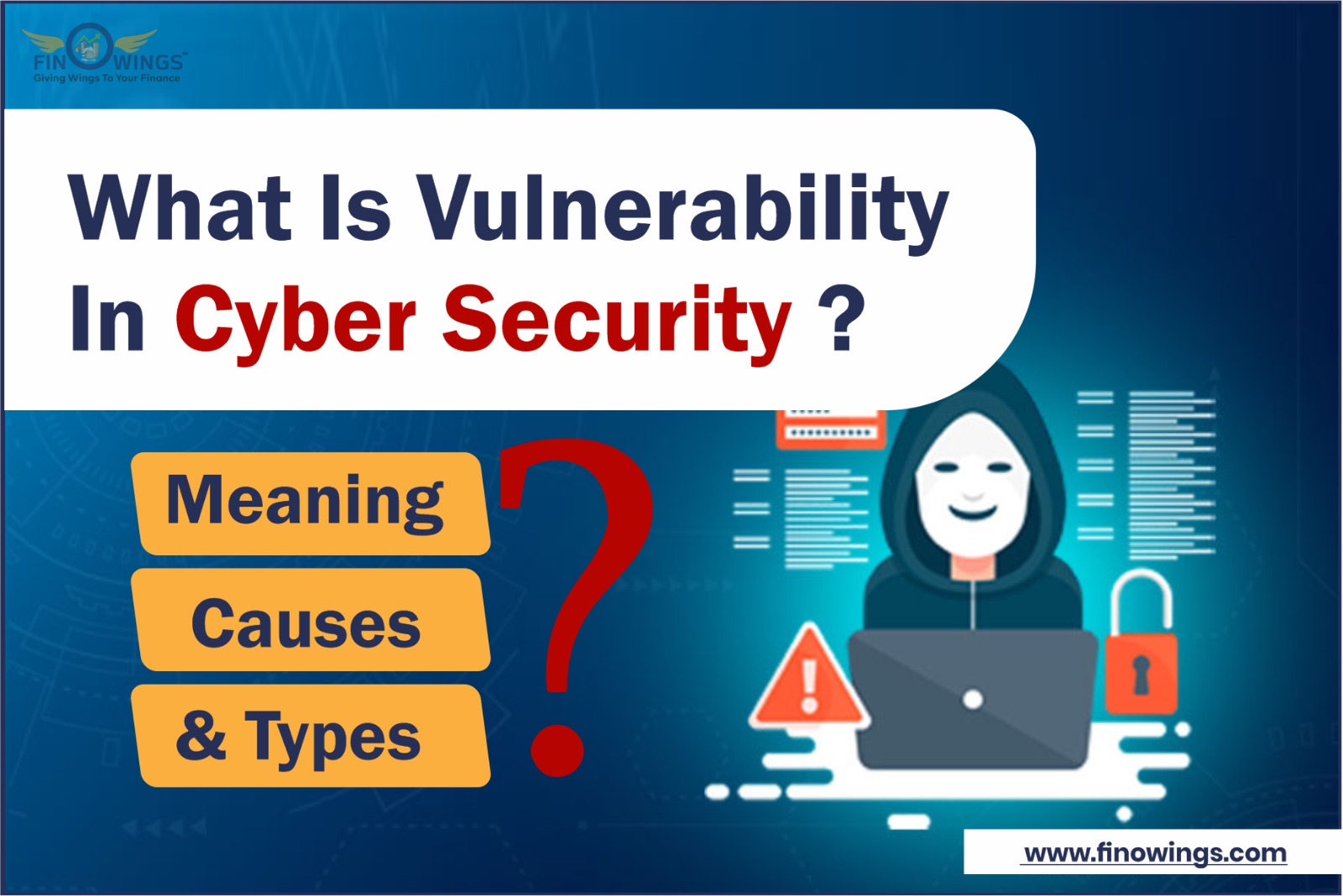Home >> Blog >> What Is Vulnerability In Cyber Security? Meaning, Causes & Types?
What Is Vulnerability In Cyber Security? Meaning, Causes & Types?
Introduction
A vulnerability is a defect that cybercriminals can use to hack a computer system without authorization. A cyberattack can run harmful code, set up malware, and even steal sensitive data after exploiting a vulnerability.
Multiple techniques can attack vulnerabilities, including SQL injection, buffer overflows, cross-site scripting (XSS), and open-source exploit kits that scan online applications for known security flaws and vulnerabilities.
Popular software has multiple vulnerabilities, which increases the danger of a data breach or supply chain assault for many software users. These zero-day exploits are listed as a Common Vulnerability Exposure by MITRE (CVE).
Examples of Vulnerabilities
Depending on the infrastructure they are found on, vulnerabilities might be of various distinct forms. However, six main categories can be used to classify vulnerabilities:
-
Hardware
Any vulnerability caused due to moisture, dust, soiled surfaces, natural disasters, inadequate encryption, or firmware flaws leads to vulnerability to hardware.
-
Software
Lack of auditing, insufficient testing, design flaws, memory safety violations (buffer overflows, overreads, dangling pointers), input validation flaws (code injection, XSS), directory traversal, email injection, format string attacks, HTTP header injection, HTTP response splitting, SQL injection), privilege-confusion bugs (clickjacking, cross-site request forgery, FTP bounce attack), and race conditions (symlink races, time-of-check-to-time- (blaming the victim, race conditions, warning fatigue).
-
Network
Lack of authentication, default authentication, man-in-the-middle attacks, insecure network architecture, exposed communication channels, or other lax network security.
-
Personnel
Ineffective hiring practices, a lack of security training and knowledge, a lack of compliance with security training, poor password management, or downloading malware through email attachments lead to personnel vulnerability.
-
Geographical
Natural catastrophe-prone areas, unstable power supply, or no keycard access are geographical vulnerabilities.
-
Administrative
Internal controls aren't up to par, and a lack of an audit, a continuity strategy, inadequate security, or an incident response plan.
When Should Known Vulnerabilities Be Made Public?
Public disclosure of known vulnerabilities is still a hotly debated topic. There are two possibilities:
Immediate Full Disclosure
Some cyber-security professionals support prompt disclosure and intricate details on the vulnerability's exploitability. Immediate disclosure proponents contend that it promotes secure software and expedites patching, enhancing operating system security, information security, software security, application security, and computer security.
Limited to No Disclosure
Others oppose vulnerability disclosure because they think hackers will take advantage of it. On the other hand, limited disclosure proponents contend that confining information to specific parties lowers the chance of exploitation.
There are good arguments on both sides, as with most disputes.
Whichever camp you belong to, you should know that friendly attackers and cybercriminals frequently look for vulnerabilities and test known exploits.
In order to test IT security and other organizational security measures as part of their entire information risk management and cyber security risk assessment process, some businesses have internal security teams.
In order to incentivize people to report vulnerabilities to them rather than using them maliciously, best-in-class businesses give bug bounties.
A bug bounty program's reward value typically varies according to the size of the company, the difficulty of exploiting the vulnerability, and the severity of the vulnerability. For instance, a data breach at your neighborhood convenience shop would be less valuable than discovering a leak of personally identifiable information (PII) from a Fortune 500 corporation through a bug bounty program.
Difference Between Vulnerability and Risk
Vulnerabilities are frequently categorized as cyber security threats. However, there is a difference between vulnerability and risk that may cause misunderstanding.
Consider risk as the likelihood and consequences of a vulnerability being used against you.
There is little risk if both a vulnerability's impact and the likelihood of being exploited are modest. On the other hand, there is a high risk if a vulnerability's impact and the likelihood of being exploited are both high.
The CIA triad or the resource's confidentiality, integrity, or availability can determine how a cyberattack will affect a target. This thinking leads to situations where common vulnerabilities do not provide a threat. For instance, when the vulnerable information system is of little use to your business.
What Constitutes an Exploitable Vulnerability?
An exploitable vulnerability has at least one verified, functional attack vector. The period between the introduction of the vulnerability and its patching is known as the window of vulnerability.
Many vulnerabilities cannot be used against your firm without effective security procedures.
For instance, the likelihood of data leakage is decreased if S3 security is appropriately configured. Therefore, examine your S3 permissions before someone else does.
You may lessen third-party and fourth-party risks with vendor risk management and third-party risk management techniques.
Causes of Vulnerabilities
Vulnerabilities can arise from a variety of factors, such as:
-
Complexity
Complex systems are more susceptible to errors, misconfigurations, and unauthorized access.
-
Familiarity
Common hardware, operating systems, software, and code increase the likelihood of attackers discovering vulnerabilities.
-
Connectivity
The likelihood of a vulnerability increases with a device's level of connectivity.
-
Password management issues
Brute force can be used to crack weak passwords, and using the same password repeatedly increases the likelihood of many data breaches.
-
Flaws in the operating system
Operating systems are software, and software has bugs. Operating systems that lack security by default make it possible for any user to log in and potentially introduce malware and viruses.
-
Online usage
Adware and spyware that can be loaded on computers automatically are abundant on the Internet.
-
Software bugs
Programmers can intentionally or unintentionally leave software bugs. In addition, end users can occasionally forget to update their software, leaving it unpatched and open to exploitation.
-
User Input is not checked.
Your website or software may run unexpected SQL commands if it assumes that all input is secure.
-
People
The human at the very end of the system is any organization's most prominent point of vulnerability. Most organizations are at risk from social engineering.
Vulnerability Management
The vulnerability management cycle includes the phases of identification, classification, remediation, and mitigation of security vulnerabilities. Therefore, vulnerability detection, assessment, and remediation are crucial components of vulnerability management.
Vulnerability detection techniques include:
-
Vulnerability scanning
-
Penetration testing
-
Google hacking
Upon discovery, a vulnerability is subjected to the vulnerability assessment process, which includes:
-
Identify Vulnerabilities
Finding anomalies that imply a cyberattack might exploit a vulnerability by examining network scans, pen test findings, firewall logs, and vulnerability scan results.
-
Verify Vulnerabilities
To assess the level of risk, determine whether the identified vulnerability might be exploited, and categorize the severity of the exploit.
-
Reduce Vulnerability
If a patch is not available, choose countermeasures and how to evaluate their success.
-
Remediate Vulnerabilities
Where possible, update impacted software or hardware
Vulnerability management must be a continual and recurrent exercise because cyber assaults constantly change to ensure your organization is secured.
Vulnerability Scanning
Software that scans computers, networks, or apps for known vulnerabilities is a vulnerability scanner. They can execute authenticated and unauthenticated scans and find and detect vulnerabilities resulting from network misconfiguration and incorrect code.
Authenticated scans: Scanners that can authenticate themselves using system credentials can directly access networked resources utilizing remote administration protocols like secure shell (SSH) or remote desktop protocol (RDP). It provides detailed and accurate information about operating systems, installed software, configuration problems, and missing security patches by providing access to low-level data such as individual services and configuration details.
Unauthenticated scans: Produce false positives and inaccurate data on installed software and operating systems. Cyber attackers and security analysts typically employ this technique to try and ascertain the security posture of assets with external interfaces and to discover potential data leaks.
Penetration Testing
Testing an information technology asset to identify security flaws that an attacker might exploit is known as penetration testing, often referred to as pen testing or ethical hacking. The software can automate penetration testing, or it can be done manually.
In either case, the process involves learning as much as possible about the target, looking for potential weaknesses, trying to exploit those weaknesses, and reporting the results.
The effectiveness of an organization's security policy, compliance with legal obligations, employee security knowledge, and capacity to recognize and address security issues can all be tested through penetration testing.
Google Hacking
Google hacking is looking for security flaws using a search engine, such as Google or Microsoft's Bing. Google hacking is accomplished by using sophisticated search operators to find information that is difficult to find or that has unintentionally become public due to cloud service configuration errors.
Security researchers and attackers use these focused searches to find private information that shouldn't be publicly available.
These vulnerabilities typically fall into one of two categories:
Software vulnerabilities Misconfigurations
Nevertheless, most attackers will typically check for systems with known security flaws and look for frequent user errors they are already familiar with exploiting.
You must make sure that all cloud services are correctly configured to avoid Google hacking. Whether you like it or not, once something has been disclosed to Google, it becomes public.
Yes, Google occasionally clears its cache, but until then, the public sees your sensitive files.
Conclusion
Information security and information assurance specialists work to lessen vulnerabilities. By reducing vulnerabilities, unscrupulous people have fewer opportunities to access safe data.
Users and network administrators can safeguard computer systems from vulnerabilities by updating software security patches. These updates can correct any security gaps or flaws in the initial release. Additionally, computer and network employees should be aware of current software vulnerabilities and look for defenses against them.


















